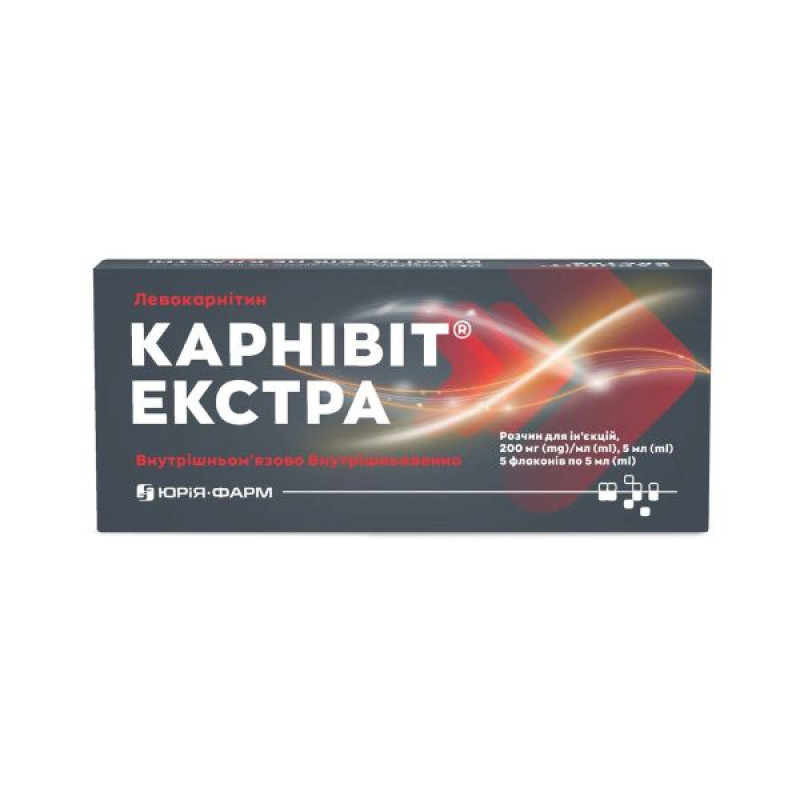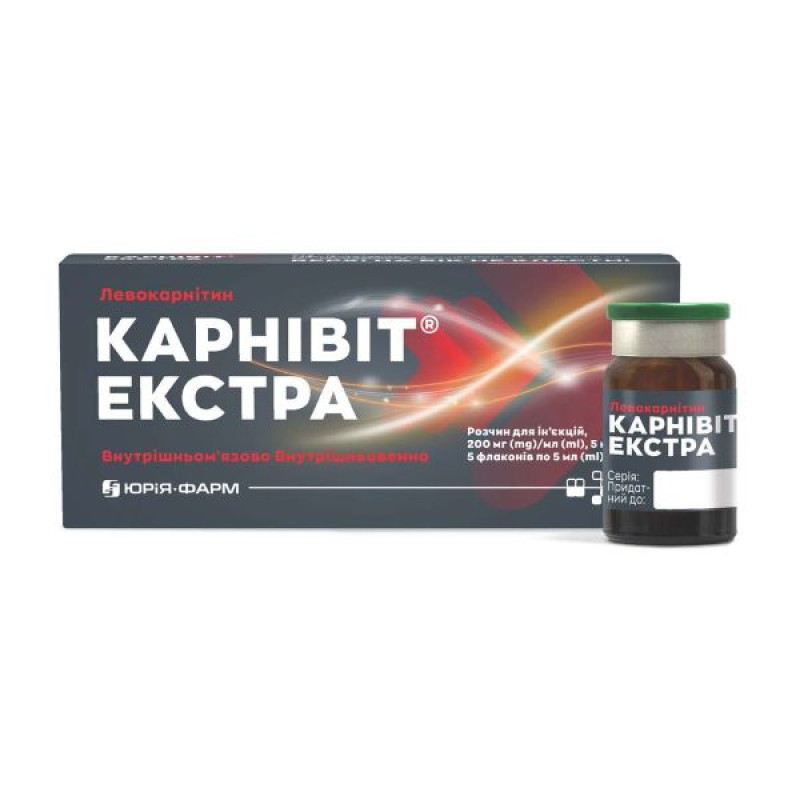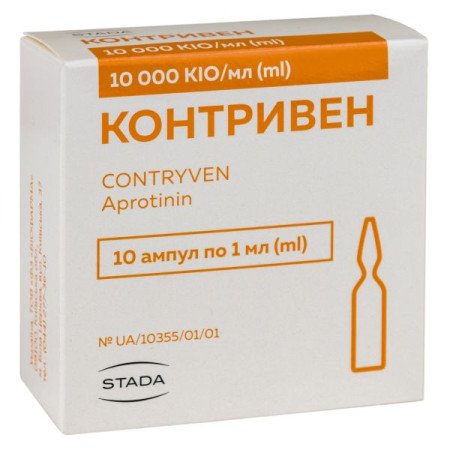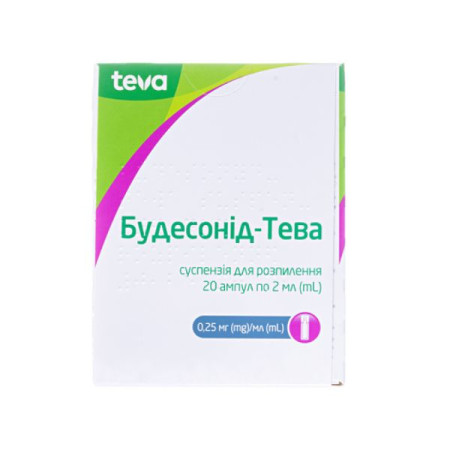Carnivit extra solution for injection 200 mg/ml bottle 5 ml No. 5
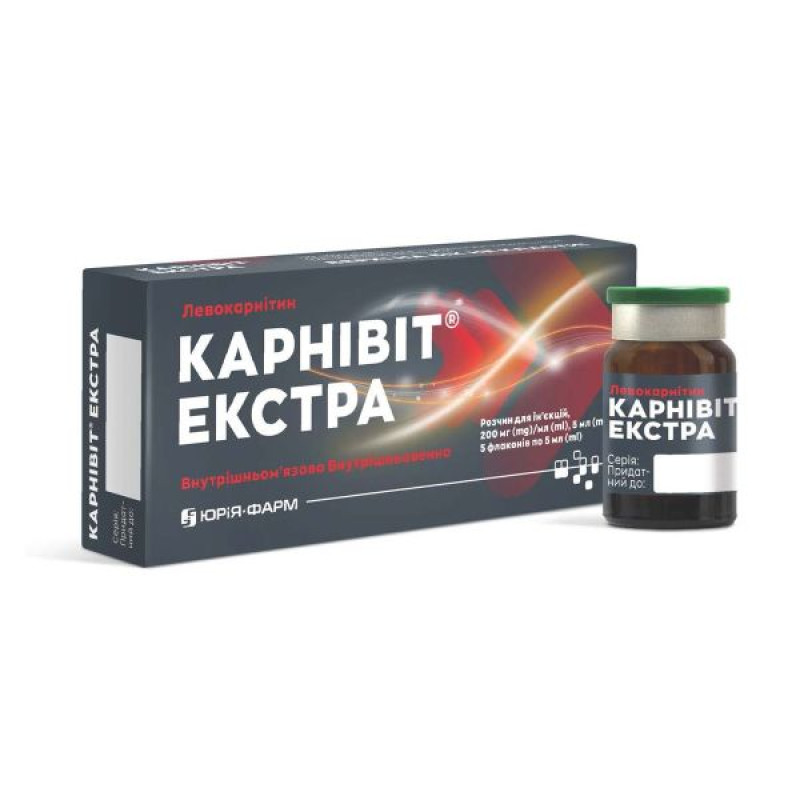
Instructions for Carnivit extra solution for injection 200 mg/ml bottle 5 ml No. 5
Composition
active ingredient: levocarnitine;
1 ml of solution contains 200 mg of levocarnitine;
excipient: water for injections.
Dosage form
Solution for injection.
Main physicochemical properties: clear colorless or slightly yellowish liquid.
Pharmacotherapeutic group
Amino acids and their derivatives. ATX code A16A A01.
Pharmacological properties
Pharmacodynamics
Levocarnitine is a natural substance involved in energy metabolism, as well as the metabolism of ketone bodies. Only the L-isomer of carnitine is biologically active.
Carnivit® is necessary for the transport of long-chain fatty acids into mitochondria for their subsequent beta-oxidation and energy production. Fatty acids are used as an energy substrate by all tissues, except the brain. In skeletal muscles and myocardium, fatty acids are the main substrate for energy production.
Levocarnitine plays an important role in cardiac metabolism, since the oxidation of fatty acids depends on the presence of sufficient amounts of this substance. Experimental studies have shown that under certain conditions, such as stress, acute ischemia, myocarditis, a decrease in the level of levocarnitine in myocardial tissue is possible. A large number of animal studies have been conducted, which confirmed the positive effect of levocarnitine in various induced cardiac disorders: acute and chronic ischemia, cardiac decompensation, heart failure as a result of myocarditis, drug cardiotoxicity (taxanes, adriamycin, etc.).
By releasing coenzyme-A from complex thioesters, levocarnitine also enhances the oxidation of carbohydrates in the Krebs tricarboxylic acid cycle, stimulates the activity of the key enzyme of glycolysis - pyruvate dehydrogenase, and in skeletal muscles - the oxidation of branched-chain amino acids. Thus, levocarnitine directly or indirectly participates in most energy processes, its presence is mandatory for the oxidation of fatty acids, amino acids, carbohydrates and ketone bodies.
In humans, physiological needs for carnitine are met through the consumption of foods containing carnitine (primarily meat) and through endogenous synthesis in the liver from trimethyllysine. The highest concentration of levocarnitine is found in muscle tissue, myocardium, and liver.
Primary systemic carnitine deficiency is characterized by low concentrations of levocarnitine in plasma, erythrocytes, and/or tissues. Secondary carnitine deficiency may result from congenital disorders of carnitine metabolism or iatrogenic interventions such as hemodialysis.
Pharmacokinetics
Absorption
Levocarnitine is absorbed by the cells of the small intestinal mucosa and enters the bloodstream relatively slowly; absorption is probably due to an active transluminal mechanism. Absorption after oral administration is limited (
Distribution
Absorbed levocarnitine is transported to various organs via the blood; the erythrocyte transport system is thought to be involved in the transport process.
Breeding
Levocarnitine is excreted mainly in the urine. The rate of excretion is directly proportional to the concentration of carnitine in the blood.
Metabolism
Levocarnitine is practically not metabolized in the body.
Indication
Primary and secondary carnitine deficiency in adults and children, including newborns and infants.
Secondary carnitine deficiency in patients undergoing hemodialysis.
Suspicion of secondary carnitine deficiency in patients undergoing hemodialysis in the following cases:
− severe persistent muscle spasms and/or hypotensive episodes during dialysis;
− energy deficit, which leads to a significant negative impact on the quality of life;
− muscle weakness and/or myopathy;
− cardiopathy;
− anemia that does not respond to erythropoietin treatment or requires high doses of erythropoietin;
− loss of muscle mass.
Contraindication
Hypersensitivity to the components of the drug.
Interaction with other medicinal products and other types of interactions
Simultaneous use of glucocorticoids leads to the accumulation of levocarnitine in body tissues (except the liver). Other anabolic agents enhance the effect of the drug.
Very rare cases of increased international normalized ratio (INR) have been observed in patients receiving coumarin anticoagulants concomitantly with levocarnitine (see section 4.4, Adverse Reactions). INR or other appropriate coagulation test should be performed weekly until stable, and monthly thereafter, in patients receiving such anticoagulants concomitantly with levocarnitine.
Application features
Very rare cases of increased international normalized ratio (INR) have been observed in patients who were simultaneously taking levocarnitine and coumarin anticoagulants (see section “Interaction with other medicinal products and other types of interactions”, “Adverse reactions”).
Use during pregnancy or breastfeeding
No teratogenic effects were observed in preclinical studies of the drug. When using the highest tested dose of 600 mg/kg body weight in animals, a statistically insignificant increase in the frequency of post-implantation fetal death in early pregnancy was noted. The significance of these results for humans is unknown. Data on the use of levocarnitine in the form of a solution for injection in pregnant women and during breastfeeding are absent.
Considering the serious consequences of carnitine deficiency for a pregnant woman, the risk of interrupting Carnivit® treatment for the mother is considered greater than the theoretical risk to the fetus if treatment is continued.
Levocarnitine is a common component of breast milk. The use of levocarnitine in breastfeeding mothers has not been studied.
Ability to influence reaction speed when driving vehicles or other mechanisms
Unknown.
Method of administration and doses
The drug should be administered intravenously slowly over 2–3 minutes.
Use in congenital metabolic disorders.
During therapy, it is advisable to monitor carnitine and acyl-carnitine levels in both blood plasma and urine.
The required dose depends on the specifics of the inborn error of metabolism and the severity of the disease.
In case of acute decompensation, the recommended dose may be up to 100 mg/kg per day in 3–4 doses. Higher doses may be used if necessary, although side effects, including diarrhea, may be increased.
Secondary carnitine deficiency in patients undergoing hemodialysis.
Before starting Carnivit® therapy, it is advisable to check the level of carnitine in the blood plasma.
Secondary carnitine deficiency is diagnosed when the ratio of acyl-carnitine to free carnitine in blood plasma is greater than 0.4 and/or when the concentration of free carnitine is less than 20 μmol/L.
A dose of 20 mg/kg should be administered intravenously by bolus injection at the end of each dialysis session. The overall response should be determined by monitoring plasma acyl-carnitine and free carnitine levels and by assessing the patient's condition. Normalization of carnitine content in muscle tissue and cardiomyocytes occurs approximately 3 months after reaching normal plasma carnitine concentrations. If carnitine administration is discontinued, its levels will inevitably begin to decline again. The need for a repeated saturating course of treatment should be determined by quantitative determination of plasma carnitine at regular intervals and by monitoring the patient's condition.
Hemodialysis – maintenance therapy
After a loading course of intravenous administration of the drug, a maintenance dose of 1 g of levocarnitine per day orally should be used. On the day of dialysis, Carnivit® should be administered intravenously at a dose of 1 g immediately after the end of the next session.
Children.
The drug should be used in children from the first day of life, including premature babies.
Overdose
There have been no reports of toxicity from overdose of levocarnitine. Large doses of the drug may cause diarrhea. Levocarnitine is readily removed from blood plasma by dialysis.
Treatment: take measures to remove the drug from the digestive tract if taken orally. Provide symptomatic and supportive therapy. No life-threatening cases of overdose have been reported.
Adverse reactions
The adverse reactions listed below are classified by system organ class and frequency. They are classified according to frequency using the following convention: very common (≥ 1/10), common (≥ 1/100 and < 1/1000), and uncommon (≥ 1/1000 to < 1/1000).
All of the adverse reactions listed below occurred very rarely.
Gastrointestinal tract
Various mild gastrointestinal disturbances have been observed with long-term oral levocarnitine administration, including transient nausea and vomiting, abdominal pain, and diarrhea. Patients have also developed a characteristic body odor. Reducing the dose often reduces or eliminates gastrointestinal symptoms and body odor.
Blood and lymphatic system disorders
In very rare cases, an increase in the international normalized ratio (INR) has been observed in patients (see sections "Special instructions for use", "Interaction with other medicinal products and other types of interactions").
Tolerability should be carefully monitored during the first week of administration and after any dose increase. Intravenous administration of Carnivit® is generally well tolerated.
Expiration date
2 years.
Storage conditions
Store at a temperature not exceeding 30 °C in the original packaging.
Keep out of reach of children.
Packaging
5 ml in a bottle; 5 bottles in a contour blister pack; 1 contour blister pack in a pack.
Vacation category
According to the recipe.
Producer
Location of the manufacturer and address of its place of business
Ukraine, 18030, Cherkasy region, Cherkasy city, Kobzarska st., 108. Tel. (044) 281-01-01.
There are no reviews for this product.
There are no reviews for this product, be the first to leave your review.
No questions about this product, be the first and ask your question.







